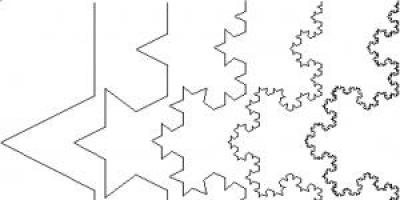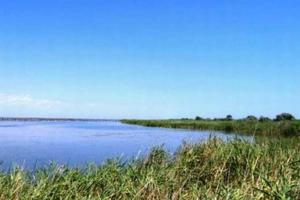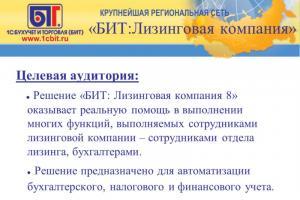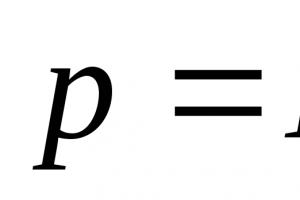The PASADOR company offers to buy check valves of various modifications at attractive prices. We supply products to all regions of Russia.
Pipeline fittings of this type are used to prevent the reverse movement of the working medium (water hammer or back pressure). Our range includes threaded, flanged and wafer products designed for industrial and household use and designed for long term services.
The advantages of check valves are:
- automatic operation without additional energy consumption;
- reliability;
- performing functions both in normal and emergency operating conditions;
- no significant impact on the pipeline capacity.
- opening the valve at a minimum pressure of 0.5 bar (gravity).
From us you can buy check valves for domestic and process water supply systems, heating, steam systems, oil and chemical industries, and sewage systems at reasonable prices. The products can be used in pipelines for transporting non-aggressive liquids and gases.
The catalog presents check valves with threaded, flange and wafer mounting in a body made of cast iron, carbon and of stainless steel, brass, bronze. Most models are designed for horizontal and vertical installation.
The design consists of a body and a shutter, the mechanism of which is a spool. In the absence of flow, fittings of this type are in a closed state. Under the influence of a moving working environment, the shutter automatically opens and closes when it stops. The spool opens only in one direction, so there is no reverse flow of media.
Types of check valves
We offer ball and straight line check valves with various types fastenings
Regular walk-through models are intended only for horizontal installation. Ball check valves can be installed in horizontal and vertical positions, since they use a ball element as a valve. These types of fittings are available with threaded and flange mounting.
Wafer check valves are installed in flanged pipe breaks. They can be mounted in vertical and horizontal positions. A flat disk is used as a shutter. Designs with double-leaf valves are equipped with damping elements to successfully resist water hammer.
The main problem solved by a flanged check valve installed on pipelines for various purposes, is to ensure the movement of the transported medium in one direction. Design features a check valve, for the installation of which a flange is used, allow such a device to automatically stop the movement of the transported medium at the moment when such movement begins to occur in the wrong direction. Flange-type check valves are installed primarily on pipelines through which liquid media are pumped.
Features and applications of check valves
Check valves various types(including flanged) are used to protect the pipeline from:
- the occurrence of reverse flows of the working environment in it;
- hydraulic shocks.
Reverse flow in pipelines, as is clear from its name, is the movement of the working medium in the opposite direction. This can happen, in particular, when the pump that supplies the working fluid and moves it is turned off. If for heating systems such a phenomenon as reverse flow is not particularly critical, then in sewer and water supply systems, as well as in pipelines through which petroleum products and other media are transported, its occurrence cannot be allowed. That is why the use of check valves in such pipeline systems is a mandatory requirement.

Another undesirable phenomenon from which pipeline systems can be protected by a flanged, wafer check or any other valve is water hammer. It is characterized by the fact that a sharp pressure drop in the transported medium occurs in the pipeline, which leads to the formation of a shock wave passing along the entire length of the pipeline system.
Water hammer can, over time, lead to the destruction of individual sections of the pipeline and the failure of elements that are used to ensure its normal operation. With the help of check valves installed using flanges or any other method, the system is divided into separate isolated sectors, which makes it possible to effectively protect it from the effects of water hammer.
Operating principle
The principle by which check valves operate is quite simple, yet such devices are very effective and are able to provide reliable protection parts of pipeline systems. Any check valve, regardless of type, consists of a body (steel or cast iron) and a locking element located in it. The locking mechanism operates due to the pressure of a special spring, the rigidity of which can be adjusted.
The spring with which check valves are equipped ensures that their locking elements open in only one direction - in the direction of the correct movement of the transported medium. By exerting pressure on the shut-off element held by such a spring, the liquid or gas pumped through the pipeline opens it and begins to move in the required direction. As soon as the pressure of the working medium in the direction of opening the valve begins to fall, the shut-off element closes, preventing the liquid or gas from moving in the opposite direction.

Types and properties
The design of the shut-off elements of check valves, for installation of which flanges are used, can be different. The choice of a flange valve with a certain type of locking element depends on the tasks for which such a device is intended.
So, depending on the design of the locking element, there are:
- rotary valve;
- lift type check valve;
- check valve with ball shut-off element;
- double-leaf check valve;
- intake check valve equipped with a mesh.

A rotary check valve is a locking device, the main part of which is a steel slamming disk fixed on a spring-loaded axis. At the moment when such a check valve is open, the disk in its inner part is located parallel to the movement of the working medium, and when closed, it is perpendicular. The flange check valve has a simple design and, accordingly, low cost. If we talk about the disadvantages of check valves of this type, the most significant of them is that they swivel mechanism at the moment of closing, the locking disc slams too hard, which over time leads to wear of the seat. Rotary check valves, equipped with a special mechanism that ensures smooth closing of the locking disc, do not have this drawback. Meanwhile, such improved flanged rotary valves are more expensive, which somewhat limits their use.

In flange-type lifting check valves, a special spool is used as a shut-off element, which, under the pressure of the working flow, rises along the vertical axis, and when the pressure decreases, it drops to its seat, blocking the movement of the medium transported through the pipeline. It should be borne in mind that such valves, due to their design features, can only be installed in a vertical position.
Ball check valves, as their name suggests, use a ball-shaped spool as a shut-off element. Their large size does not allow them to be used as wafer locking devices.

A double-leaf check valve, which is produced mainly in a wafer design, involves the use of two slamming flaps simultaneously in its design. Each of them is connected to a spring, which regulates the strength of their resistance to the pressure of the working flow. Wafer butterfly valve due to small sizes its locking elements - doors - are very compact in size.
Check valves, which are additionally equipped with a strainer, are used for installation on pipeline systems for pumping oil, gas or water from underground sources. Such devices, the most popular model of which is 16CH42R, simultaneously solve two important problems: their locking mechanism prevents liquid or gas from returning back to the source, and the mesh protects the pipeline from large debris entering it.

Model 16Ch42R, the body of which is made of steel or cast iron, is characterized by wide versatility and can be installed on pipelines or pumps used for pumping both liquid and gaseous media.

Flanged and Wafer Check Valves: Differences
Check valves that use flanges for installation on piping systems can be one of the following types:
- flanged;
- wafer.
On flange-type devices, the supply flange and the return flange are welded to the valve body and form a single unit with it. Flanged check valves are used primarily for fitting pipes large diameter, with the help of which the transportation of working media is carried out on an industrial scale.

Wafer check valves have virtually no fastening elements. This type of installation, as mentioned above, is very often used for installing double-leaf check valves. In this case, the valve itself (in particular, a double-leaf wafer valve) is installed between two flanges fixed at the ends of the connected pipes. After its placement in special seats, which are equipped sealing elements, the flanges are tightened together using threaded rods. Despite the apparent unreliability of such a connection, if it is made correctly, the wafer check valve is fixed with the same reliability as devices of any other type.
Check valves can be installed on pipeline systems using not only flanges, but also couplings or a welded connection. However, if we talk about large-diameter pipelines, such valves are installed on them only using flanges.

Advantages and disadvantages of flange type check valves
Since flange-type check valves are most often used to equip pipelines through which the working fluid is transported with high intensity, the internal elements of such devices (in particular, the shut-off mechanism) experience significant shock loads during operation. In addition, a flange-type check valve, due to its significant dimensions, itself causes water hammer. During the process of closing the valve flaps, the pressure in the pipeline in which it is installed inevitably increases, which leads to the formation of a water hammer.
In those pipeline systems in which water hammer is not capable of having a significant impact on the performance of both individual elements, and the system as a whole, simple type check valves are used. The diameter of the latter, as a rule, does not exceed 400 mm. In other cases, non-impact type check valves are used. Smooth and soft closing of the shut-off element in shockless flanged valves can be ensured by special weights or hydraulic dampers. Meanwhile, when choosing non-impact type check valves to equip a pipeline system, you should keep in mind that they can only be installed in horizontal sections.

The most significant advantages of flanged check valves include:
- compact dimensions, which allows the installation of such devices in almost any area of the pipeline system;
- opportunity efficient work even in systems where the working environment is highly polluted;
- Possibility of installation on pipelines with large diameters.
Features of choice
The main parameters that you should pay attention to when choosing a check valve (including flanged ones) are:
- operating pressure at which such a device can operate;
- nominal diameter.
You can find out what operating pressure the check valve corresponds to by looking at the device markings, which this parameter denoted by the letters RU. The numbers in the marking after such letters indicate the operating pressure for which the device is intended. For example, the designation RU16 indicates that a flanged valve can operate at a pressure of 16 bar without being subject to excessive wear.

Wafer is a type of device that is connected to a pipeline through a wafer or flange connection. The conditional diameter passage for it can vary between 15-400 millimeters.
Check valve can be rotary or lifting. The rotary one can be shockless or simple, and the lifting one can be horizontal or vertical (depending on the type of pipeline for which it is used). In addition, there are single-seat and multi-seat valves.
The wafer check valve is designed to prevent reverse flows of the internal environment in the pipe, as well as water hammer. He does not represent shut-off valves. According to its design, it can be rotary, lifting, ball or spring. A wafer check valve is usually characterized by the fact that the working medium penetrates in only one direction, and a flange connection is used for its fastening. A flange is a connecting part of a pipeline, which is a frame or disk equipped with holes for bolts. The flange is used to connect pipelines to fittings; in addition, it can be part of a valve, fitting or pipe. The wafer check valve is intended for installation on pipelines located horizontally, which prevents the formation of reverse flows in the internal environment. Fittings of this type are regulating mechanisms. This type may well become a replacement for dissimilar taps, as well as shut-off taps.

The wafer check valve is intended for installation on technical pipelines, where it automatically protects and blocks the occurrence of reverse flow. It is advisable to use it for a variety of liquids, steam and gas. By design, such valves provide the proper level of tightness, eliminating the possibility of installation of this type of valve in a vertical or horizontal position. During installation, it is clamped between two flanges. The medium flow is directed towards the valve disc, marked with an arrow.

A professional wafer check valve is used for guaranteed reliable sealing of pipelines against the formation of unwanted flow in the opposite direction, which is usually formed from the medium used for various reasons. can be used in many ways heating systems, as well as in modern chemical, household, food and other types of industries. Such a valve is capable of operating in different working environments: chemical mixtures, air, water in hot or cold supply systems, sea water, drinking water, mineral oils, petroleum products and gas, as well as in other types of media.
This type of valve can be made from a fairly wide range of materials, among which the most popular are usually distinguished: cast iron, brass, steel, copper. This allows it to be used as a connecting part of pipelines at different pressures and temperatures, while its functioning remains at a fairly reliable level, regardless of the working environment.
Large pipelines intended for operation in difficult operating conditions must be protected from pressure drops and prevent the formation of reverse flows in them, etc.
If this is not done, the system may fail, which is not so easy to solve. The simplest and most effective tool for such tasks is rightfully considered to be a wafer or ball tool.
They all have differences in design, but have one goal - to protect the pipeline from negative influence reverse flows and everything connected with them.
Contents of the article
Features and purpose
As we noted above, the reverse, as well as their varieties, essentially perform similar, almost identical tasks.
They protect water supply or heating equipment from:
- reverse flows;
- water hammer.
Let's figure out what this reverse flow is. Reverse flow in pipes is an interesting phenomenon characterized by a change in the direction of flow in pipes.
Imagine, for example, a heating system in a private house. In heating, the heated medium must move through the pipes constantly, so that the water does not stagnate; small circulation pumps are installed.
The pump, by its operation, provokes movement by increasing pressure in the pipes. If you turn it off, a kind of vortex may form inside the pipeline for a short period. Confusion with pressures will cause water to flow in the opposite direction.
For heating systems, such things are not particularly scary. But we are not limited to them. For sewerage, large water supply pipes, industrial systems transportation, etc. backflow is very undesirable. Therefore, such things are strictly regulated there, and all dangerous places are protected.

The second dangerous factor is water hammer. Water hammer is the name given to sudden changes in pressure in pipes, when a kind of shock wave is formed, passing along its entire length. When it encounters resistance, it has a destructive effect on problem areas. One water hammer is not a problem. Even a dozen will not have a serious negative effect.
The danger here is that water hammer is a periodic phenomenon, over time they will provoke destruction or severe wear of sections of the pipeline, which is desirable to avoid.
The steel check valve prevents such problems. It becomes a kind of bulkhead, airlock doors dividing the system into isolated sectors. Problems that appear in one sector remain in that sector.
Operating principle
The steel check valve operates thanks to its unique and very convenient design. This design is simple, but at the same time extremely effective.
Let's consider a standard steel sample, without going into the details of its individual varieties for now.
The basic steel receiving fitting consists of a body and a locking element. The body is made of steel or cast iron, with a certain diameter and properties.
There is a locking mechanism inside the housing. The mechanism, no matter whether it is ball, double-leaf or lifting, works due to the pressure of a special spring. The spring stiffness can be adjusted.
The spring works in one direction, that is, it allows the locking element to open when the flow in the pipes moves correctly.

If the water begins to move, it begins to put pressure on the shutter or shut-off element of the check valve. The spring will withstand the pressure until it exceeds permissible norm, then the valve will begin to open.
A decrease in pressure signals that the water flow is weakening. The lower the pressure, the more the spring works. As soon as it falls below a certain point, the spring will close.
All the water that managed to pass through the bulkhead will remain in its place and flow further. The flow cannot be reversed, since the shut-off element in the valves opens only in one direction - in the direction of the given flow movement.
Types and properties
Let us draw your attention to the fact that the design of such equipment may differ depending on what tasks it faces and what specific type we are considering. - is not the same as a wafer butterfly valve, and both are different from what a grid foot valve is.
So, by type of construction The steel sample is divided into:
- Turning.
- Lifting.
- Double-leaf.
- Reception, with mesh.

In order to avoid such inconveniences, manufacturers came up with a rotating steel sample with a soft closing mechanism. It's a pleasure to work with him. The only negative is the cost.
The lifting sample uses a spool as a shut-off element. Lift valves are installed exclusively vertically. The spool, under the pressure of the flow, rises along its vertical axis and falls to its original place.
involves the use of a ball valve. It is characterized by large dimensions, therefore it cannot be used as a wafer unit. Otherwise it is a standard locking part.
A bicuspid valve is usually made up of two operating leaflets. They are both connected to an internal spring that regulates the resistance force of the sashes. The doors are miniature and take up almost no space, so products with them are very compact.
A foot valve with a filtration mesh is a type of fittings designed exclusively for pumps that extract something from the bowels of the earth. The mesh prevents large debris from getting inside the pipe, and the locking mechanism prevents the pumped out liquid from returning back. A striking example of such equipment is the 16ch42r model.

Model 16ch42r – check valve for large pumps. 16h42r fittings are produced mainly from steel or cast iron. The 16ch42r valve is good for its versatility. It shows itself effectively in the production of both water and oil and gas.
Connection types
This type differs in the method or location of connection.
Select valve:
- flanged;
- Wafer;
- welded coupling;
- coupling threaded.
The flanged model has flanges welded onto the ends of the body. It is specifically designed to solve problems in industrial areas or large-scale civil water supply systems.

The wafer valve is characterized by the absence of fastening elements as such. It looks like a short (up to 10 cm wide) piece of pipe with valves. It does not need to be welded or screwed, just place between flanges, or rather, seal them, and then tighten the flanges with long studs.
Contrary to popular belief, the wafer pattern holds up, provided it is installed correctly and well secured, no worse than its counterparts with a more traditional approach.
Coupling models are designed for installation on medium and small pipelines with DN25-D32. Quite rarely, coupling samples with DN50 or more are found. The welded coupling element is accordingly welded to the pipes, and the threaded element is oriented for installation by screwing union nuts onto a pre-prepared thread.
Wafer check valve and its subtypes (video)
Pressure and nominal diameter
In terms of characteristics, when choosing, pay attention to the nominal diameter and pressure.
Working pressure is marked with the abbreviation RU. For example, adding the entry RU16 in the name means that we have a fitting that can withstand a nominal pressure of 16 bar. It is assumed that at this pressure level it operates without any wastage or excessive wear.
The approximate diameter is indicated by the abbreviation DU. Accordingly, a valve with DN25 in the name will have a nominal diameter of approximately 25 mm, with DN32 - 32 mm, with DN100 - 100 mm, etc.
The remote control determines where we can use the fitting and for what purposes. The valve's remote control must necessarily correspond to the remote control of its adjacent parts. A check valve with DN80 can be connected to pipes and fittings only with DN80 and nothing else.
As a rule, small-sized models such as DU25 - DU50 are used for civil pipelines and are focused primarily on, and anything larger is industrial products.








